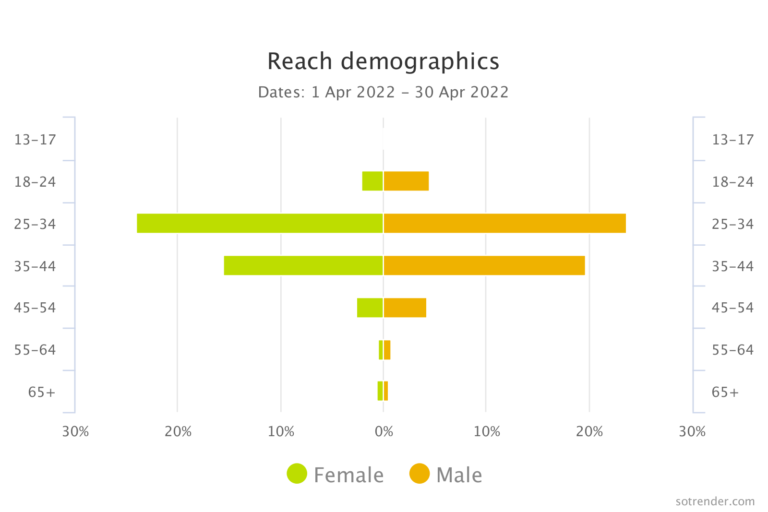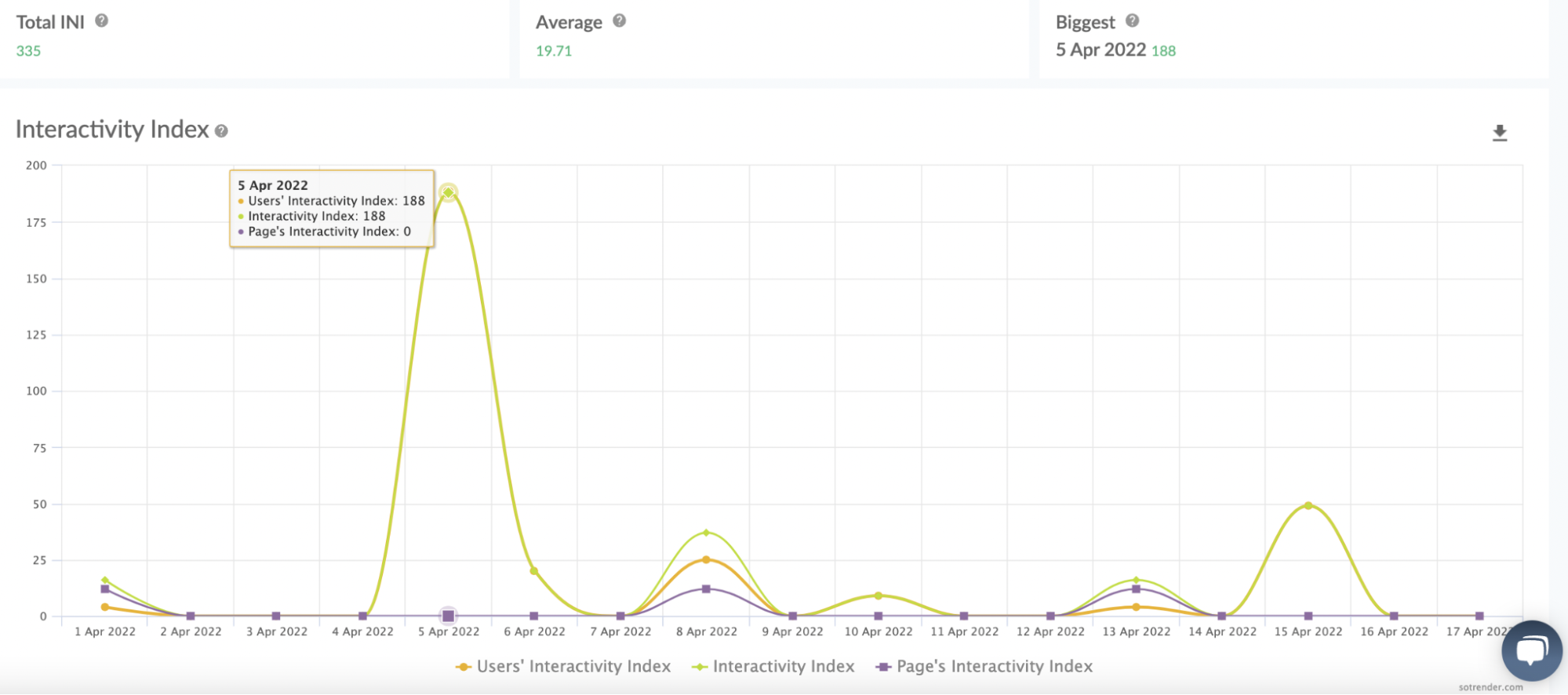Social media has become an integral part of every marketing strategy. However, it requires continuous monitoring and optimization to generate better results. And with so many platforms and billions of users, tracking and measuring results could be challenging, especially if you don’t use social media analytics.
Social media analytics refers to analyzing social media data that helps understand consumer behavior, determine what resonates the best with your target audience, and provides the data to quantify your return on investment. Furthermore, it enables you to identify which social platforms drive the maximum results.
Let’s understand what social media analytics is, its importance, how it can benefit your business, and what metrics you should be tracking.
What Is Social Media Analytics?
Social media analytics is the process of gathering and studying data from social networks to improve the efficiency of your marketing campaigns.
However, social media data can be messy, and unstructured, yet highly valuable – depending on how you track and measure it. Therefore, it is crucial to use a social media analytics tool that can streamline your insights.
A good social media analytics tool can help you identify changing customer trends, measure ROI for each campaign, and understand how your content is perceived compared to your competitors.
Why Is Social Media Analytics Important?
You cannot improve what you don’t know. Without social media analytics, you’d never know how and if your social media marketing efforts are generating good results.
Social media analytics streamlines data from multiple networks and displays it in a centralized dashboard. It enables marketers to understand what resonates the most with their audience. It also allows you to test different strategies and identify what brings the best results.
Also, social media analytics keeps you ahead of the competition. Most social media analytics tools allow you to compare your performance with your competitors. This will inspire you to do better and avoid their mistakes in terms of content and strategy.
What Are the Key Objectives of Social Media Analytics?
The objectives of social media analytics are similar to what we’ve discussed above. It aims to:
- Highlight problems and weaknesses: No marketing strategy is foolproof. And with changing customers’ expectations, it can be difficult to keep up. However, you can quickly highlight problems and weaknesses that you need to address with social media analytics.
- Test your strategy: Social media is all about testing what type of content resonates with your audience. Analytics helps you do A/B testing regularly and optimize your process for better results. For example, if you notice that a particular social media posting strategy doesn’t bring the audience to your landing page, you can change the post’s strategy or format.
- Track your team’s performance: If you don’t know how your social media team is performing, you won’t be able to improve their performance. Analytics allows you to do exactly that.
How Can Social Media Analytics Help in Improving Your Business?
First and foremost, social media analytics helps you align your social media marketing efforts with your business goals. It also enables you to prove your ROI, make better decisions, and map the effect of third-party channels on your business.
Let’s understand these things in detail.
1 – Prove Your ROI and Marketing Impact
The bottom line for any business is the return on investment. If you’re investing in social media marketing, you’d want it to bring fruitful results to your business (be it in terms of money, brand awareness, leads, or a positive reputation). Social media analytics can help determine if you’re achieving your goals.
However, you’ll have to choose the right KPIs (key performance indicators). If your social media strategy isn’t working, these KPIs will point you in the right direction, allowing you to make effective tweaks before performance becomes a real problem.
2 – Better Understand Your Audience
Social media analytics makes it easier to understand your audience and what they expect from your brand. For example, if you head towards your Instagram insights, you’ll find your audience’s demographics (gender, age range, location, etc.) and when they’re the most active.

Analyzing reach demographics in Sotrender
Insights about users’ activity allow you to post at the best times and optimize your content for your target audience. You can find at what time most of your target audience is active on Facebook, Instagram, Twitter, and LinkedIn. Then, you can use this data to post on optimal times for a higher engagement.
3 – Make Better Business Decisions
Social media is all about people. And social media analytics can help uncover how people perceive your brand, what your competitors are doing, and how you can improve your products and services.
Here are some ways social media analytics can help you make better business decisions.
- Social media listening: It provides insights into what people are talking about your brand or competitors on social media. This enables you to create a strategy to maintain and improve your brand reputation on public platforms.
- Identify and respond to trends: You can quickly act upon upcoming trends and stay ahead of competitors by analyzing real-time data.
- Understand how effective your customer service is: Social media, especially Twitter, is used heavily for customer service. And if you find more and more people complaining about your service on social media, chances are your key support channels (phone, email, or chat) aren’t as effective, and you need to improve them.
4 – Identify the Best Type of Content
Social media analytics provides you with a better idea of what topics or content your target audience loves. For instance, if you see images and videos drive more engagement than text-based or link posts, you can focus more on the former to drive consistent results.
For instance, the best types of trending social media content are:
- Tutorial videos: how-to and DIYs
- Feedback-seeking questions: People love when their opinions are valued. Thus, opinion polls and feedback questionnaires have a high engagement rate.
- Humorous posts: Showing the fun side of your brand can make people follow you for more.
However, only analytics can tell what works the best for your brand.
What Metrics Should Be Tracked With Social Media Analytics?
There are hundreds of social media metrics, from follower counts to likes and comments. Knowing which ones to track can be confusing and overwhelming. But not anymore. We’ve highlighted the best metrics for social media analytics.
1 – Engagement: Likes, Comments, and Shares
Engagement rate helps understand how your followers perceive your content. For example, a high engagement rate indicates that people love your content, while a low engagement rate implies the opposite.
The key engagement metrics to track are:
- Likes, comments, and retweets: It includes individual engagement metrics, such as likes, comments, shares, and retweets.
- Post engagement rate: It is calculated by dividing the number of engagements by impressions.
- Brand mentions: It includes organic mentions of your brand that aren’t a part of a reply.
It is worth mentioning that a single engagement metric might not give you a full picture. For example, a post that receives a lot of likes but no comments or shares might not be bad. However, there are chances that the caption wasn’t compelling enough.
2 – Brand Awareness: Impressions and Reach
Often used interchangeably, impressions and reach are two different metrics. At the most basic level:
- Impressions refer to the number of times a post shows up in someone’s feed.
- Reach refers to the number of unique people who see your content.
A post with a high impression rate but a low engagement rate indicates that your post wasn’t interesting enough for your target audience to take action.
3 – Share of Voice: Volume and Sentiment
It is often used during paid online marketing campaigns or events that your brand participates in. With the right social media analytics tool, you can quickly determine the volume of discussion for certain keywords (such as your company name).
This will help you make money online and will give you a fair understanding of where you stand against your competitors regarding your share of voice (a marketing metric that helps compare brand awareness against your competitors).
4 – Return on Investment: Referrals and Conversions
Track how much traffic and conversions you’re getting from social media to determine your ROI. However, you’ll need to leverage UTM tracking and Google Analytics (or other web analytics tools).
- Referrals indicate how users land on your website. For example, you can see “social” in the traffic sources in your Google Analytics account.
- Conversion is when someone makes a purchase. You can track conversions by the source on Google Analytics.
5 – Customer Satisfaction: Response Rate and Response Time
57% of customers prefer contacting companies via digital and virtual channels like VoIP systems, email, and social media rather than voice-based customer support. 52% say Facebook is the most effective social media channel for customer service, followed by Twitter (25%).
This makes it imperative to track customer satisfaction on social media. You can do that by monitoring the response rate and response time.
Response rate indicates how many requests your team responds to, while response time highlights how fast they do. So make sure yours is better than the average response rate in your industry.
Make sure you have a high response rate and low response time. This will help to solve many queries quickly, improving overall customer satisfaction.
Social Media Analytics vs. Social Media Data
Social media data is the information collected from social networking sites that show how users interact with your content or page. Examples of social media data are the number of likes, comments, and shares on each post.
On the other hand, social media analytics is the ability to find meaning in that data to support business decisions. Examples of social media analytics are the average engagement rate, what category your target audience is most interested in, etc.
Which Social Media Analytics Tools Should You Use in 2022?
Although every social media platform has its analytics, a third-party analytics tool is more important than ever. It can help you gather insights from across platforms and track relevant metrics. Furthermore, it acts as a single source of truth for your marketing and management teams.
Although every social media platform has its analytics, a third-party analytics tool is more important than ever. It can help you gather insights from across platforms and track relevant metrics. Furthermore, it acts as a single source of truth for your marketing and management teams. Later, cloud business intelligence can be used to analyze data to improve overall business performance.
That said, let’s understand what makes Sotrender a useful social media analytics tool in 2022.
Sotrender: AI-Powered Social Media Analytics Tool
Trusted by over 2300 agencies globally, Sotrender offers actionable insights to help you boost your social media campaigns’ performance and drive a higher ROI.
For instance, its Facebook and Instagram analytics gives you in-depth insights into your organic and paid social KPIs in minutes. Additionally, you can generate custom reports anytime you need them. This gives you complete control over your social media data.
You can even generate white-labeled reports based on the pre-set filters. It uses artificial intelligence to help you uncover key insights. It also lets you automate your reporting, saving time on data aggregation. Sotrender’s reports are generated within 1 minute.
You can also monitor your posts and stories’ performance, audience demographics, and reactions. You can also compare historical data to determine the impact of the changes you’ve made to your strategy. But there’s even more! In Sotrender, you can track your competitors’ organic and paid performance and work on your social media marketing strategy to make it more competitive.

Measuring Interactivity Index in Sotrender
Final Thoughts
Social media analytics help you understand your audience, prove your ROI, and make better business decisions. You need to track the right metrics for social media analytics per your social media marketing goals. Also, make sure to harness the power of a good social media analytics tool like Sotrender. Happy Social Media Marketing!






